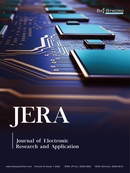Cognitive Analysis of Auditory Temporal Sequence Information Difference Based on Network Switching
Abstract
Auditory sense is an important way for people to receive and interact with foreign information. In different environment, the auditory sense changes. Therefore, it is necessary to find a detection method that can detect hearing in a timely manner. In this paper, EEG experiments were used to construct and compare brain functional networks in different states, and auditory state models were constructed with different auditory input signals. Secondly, the cross-correlation method is used to slice the signal and construct the adjacency matrix. Louvain community detection algorithm is used to process the data and calculate the network conversion rate under different parameters. It is concluded that the network conversion rate can be used to analyze the temporal variation of auditory information under the condition of controlled parameters. This indicates that the network conversion rate can also be used as a method to analyze auditory signals in the future.
References
Naatanen R, Gaillard AW, Mantysalo S, 1978, Early Selective-Attention Effect on Evoked Potential Reinterpreted. Acta Psychol (Amst), 42(4): 313-329.
Bassett DS, Porter MA, Wymbs NF, et al., 2013, Robust Detection of Dynamic Community Structure in Networks. Chaos: An Interdisciplinary Journal of Nonlinear Science, 23(1): 013142.
Yang F, Hong B, Tang Q, 2000, Independent Component Analysis and Its Application in Biomedical Engineering. International Journal of Biomedical Engineering, 2000(3): 129-134.
Blondel VD, Guillaume JL, Lambiotte R, et al., 2008, Fast Unfolding of Communities in Large Networks. Journal of Statistical Mechanics: Theory and Experiment, 2008(10): P10008.
Pedersen M, Zalesky A, Omidvarnia A, et al., 2018, Multilayer Network Switching Rate Predicts Brain Performance. Proceedings of the National Academy of Sciences, 115(52): 13376-13381.

